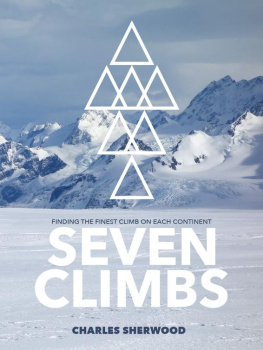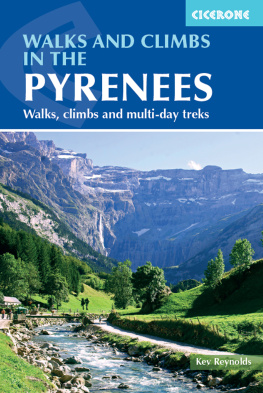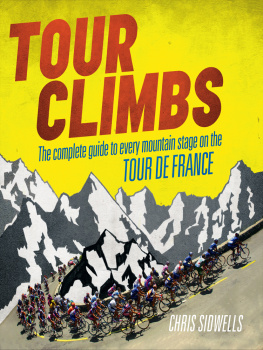Charles Sherwood - Seven Climbs: Finding the finest climb on each continent
Here you can read online Charles Sherwood - Seven Climbs: Finding the finest climb on each continent full text of the book (entire story) in english for free. Download pdf and epub, get meaning, cover and reviews about this ebook. year: 2020, publisher: Vertebrate Publishing, genre: Non-fiction. Description of the work, (preface) as well as reviews are available. Best literature library LitArk.com created for fans of good reading and offers a wide selection of genres:
Romance novel
Science fiction
Adventure
Detective
Science
History
Home and family
Prose
Art
Politics
Computer
Non-fiction
Religion
Business
Children
Humor
Choose a favorite category and find really read worthwhile books. Enjoy immersion in the world of imagination, feel the emotions of the characters or learn something new for yourself, make an fascinating discovery.
- Book:Seven Climbs: Finding the finest climb on each continent
- Author:
- Publisher:Vertebrate Publishing
- Genre:
- Year:2020
- Rating:3 / 5
- Favourites:Add to favourites
- Your mark:
- 60
- 1
- 2
- 3
- 4
- 5
Seven Climbs: Finding the finest climb on each continent: summary, description and annotation
We offer to read an annotation, description, summary or preface (depends on what the author of the book "Seven Climbs: Finding the finest climb on each continent" wrote himself). If you haven't found the necessary information about the book — write in the comments, we will try to find it.
Seven Climbs: Finding the finest climb on each continent — read online for free the complete book (whole text) full work
Below is the text of the book, divided by pages. System saving the place of the last page read, allows you to conveniently read the book "Seven Climbs: Finding the finest climb on each continent" online for free, without having to search again every time where you left off. Put a bookmark, and you can go to the page where you finished reading at any time.
Font size:
Interval:
Bookmark:
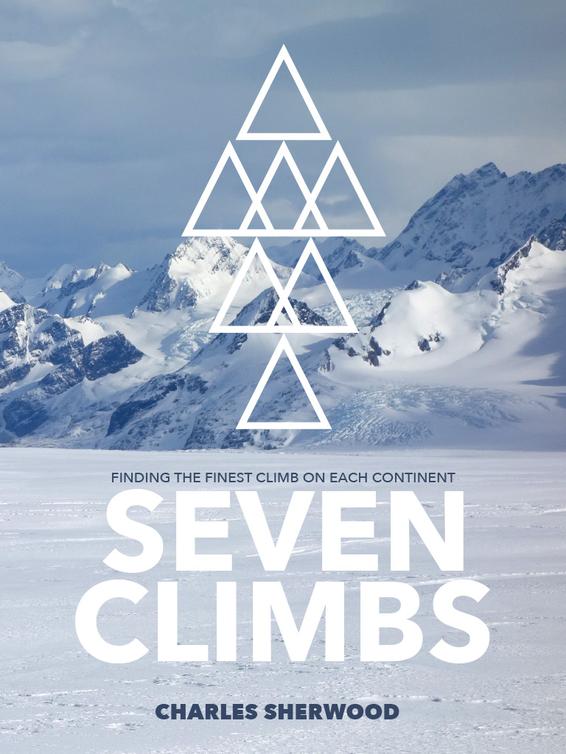
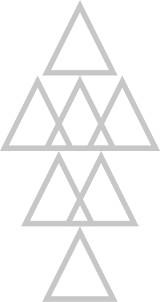
For
Rosemary & the 3Ts
With special thanks to those mountain guides and other professional climbers prepared to tie on to the same rope as someone so much less experienced than themselves:
Bruno Richard, Mark Seaton, Bob Barton, Adrian Ballinger, Brian Warren, Chad Peele, Dorje Sherpa, Kharma Sherpa, Aaron Jones, Andy Kirkpatrick, Jaime Avila, Eric Ostopkevich, Dean Staples, Stephen Venables & Skip Novak
viThe authors gross proceeds from the sale of this book will be donated to The Himalayan Trust UK, which has been working since 1989 to provide health and education training and supplies to the mountain people of the Nepal Himalaya to help them lead healthier lives, and to give their children the tools to go on to further education, thus enabling them to serve their communities better.
For more information about their work,
please visit www.himalayantrust.co.uk
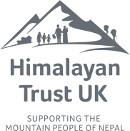
- EUROPE
1938 ROUTE, NORTH FACE OF THE EIGER (SWITZERLAND) - ASIA
SOUTH-WEST RIDGE OF AMA DABLAM (NEPAL) - NORTH AMERICA
THE NOSE, EL CAPITAN, YOSEMITE (USA) - SOUTH AMERICA
SOUTH-WEST FACE OF ALPAMAYO, CORDILLERA BLANCA (PERU) - AFRICA
TRAVERSE OF NELION AND BATIAN, MOUNT KENYA (KENYA) - AUSTRALASIA/OCEANIA
LINDA GLACIER ROUTE, AORAKI/MOUNT COOK (NEW ZEALAND) - ANTARCTICA
COAST-TO-COAST TRAVERSE OF THE SALVESEN RANGE, SOUTH GEORGIA (UK OVERSEAS TERRITORY)
The sun went down at precisely 8.05 p.m., leaving me with just the light of my headlamp. The rope snaked above me into the unknown as I teetered on the tips of my twin axes and the front points of my crampons. I was on the Second Ice Field of the Eigerwand or, to use its English name, the North Face of the Eiger. Climbing this route in the dark might have seemed foolhardy most especially when lacking any great skill as a mountaineer but things were OK. The ice was in good condition: soft enough to penetrate with a single swing of the axe, yet firm enough to bear a mans weight. In short, perfect nv. And although the natural light had gone, the ice adequately reflected the beam from my headlamp, easing progress.
Then everything became un-OK. The Second Ice Field is prone to icefall and rockfall, and just then it started to fall apart. There was a flurry above and a large chunk of ice and rock broke free and fell through the dark on to my head. I could do nothing but cling to my tenuous position, resisting the temptation to look up as the debris hurtled over me. One piece gashed my nose. Rather more concerning, another shattered my headlamp. I was now in true darkness.
Such a situation tends to prompt two big questions (intermingled with suitable expletives): what am I doing here? And what am I going to do now? Both occurred in rapid succession, including the expletives. However, I remained essentially calm. The alternative did not appear promising.
The first priority was to try to rescue the headlamp, since I had no spare. Fortunately, the ice was so steep, and my body so pressed against it, that the broken pieces, rather than disappearing into the void below, had wedged themselves between my chest and the slope. I collected all those I could find and tucked them into a pocket. Trying to reassemble them there and then was out of the question, but at least there was the hope of getting the headlamp working again later.
Second, I dug out my small radio and contacted Mark, my partner and guide, who I very much hoped was securely belayed somewhere above me (although we hadnt seen many secure belays thus far). I explained the situation, then up I went. Technical climbing in the pitch dark can be challenging, especially when its on the North Face of the Eiger, but at least ice is better than rock. Its more uniform. In such circumstances, the best strategy follows the proverb about how to eat an elephant: one bite at a time. Just keep making steady progress. I did, feeling my way with each placement. Always three points of contact, moving just one limb at a time. It felt a long and lonely climb, but eventually Mark and I were reunited. And serendipitously the headlamp was repairable, and light was restored. It took us four days to scale that face and get down the other side. But rather than being the end of a journey, it proved to be the beginning of one. An idea had taken root.
Two decades earlier a pair of American businessmen, Dick Bass and Frank Wells, had set themselves the task of climbing the highest summit on each of the seven continents. It was an inspiring project and one recorded in their enthralling book, Seven Summits. Many others since have taken up the challenge. There is even a commercial organisation of the same name dedicated to helping climbers achieve this goal. Such is the popularity of the Seven Summits that these seven easiest routes to the top of each continent are now among the busiest climbing venues in the world. They offer many things, but wilderness is no longer one of them. The encampment at the bottom of Everest and the infamous queues on the mountains summit ridge are just the best-known illustrations of what has happened.
By contrast, a notable feature of our climb on the North Face was the solitude. In those four days, we had not seen a single other person. The mountain has a mystique unrivalled in Europe, because of its aesthetics and its history the drama played out on its dark, forbidding face. And yet, its technical difficulty means that it is still climbed infrequently compared with the popular routes on other high-profile Alpine peaks such as Mont Blanc and the Matterhorn.
That got me thinking. Could I find similar challenges elsewhere? Seven Summits that represented not the highest, but the finest of mountaineering objectives on each of the seven continents in short, the best seven climbs in the world? Such a selection would need to reflect mountaineering challenge, natural beauty and historical context; and to capture something of both the diverse character of each continent and the sheer variety of climbing in all its forms. The choice would of course be highly subjective and hugely contentious. But all the better for that. After all, independently spirited mountaineers enjoy little more than a hearty argument.
And so began a personal quest
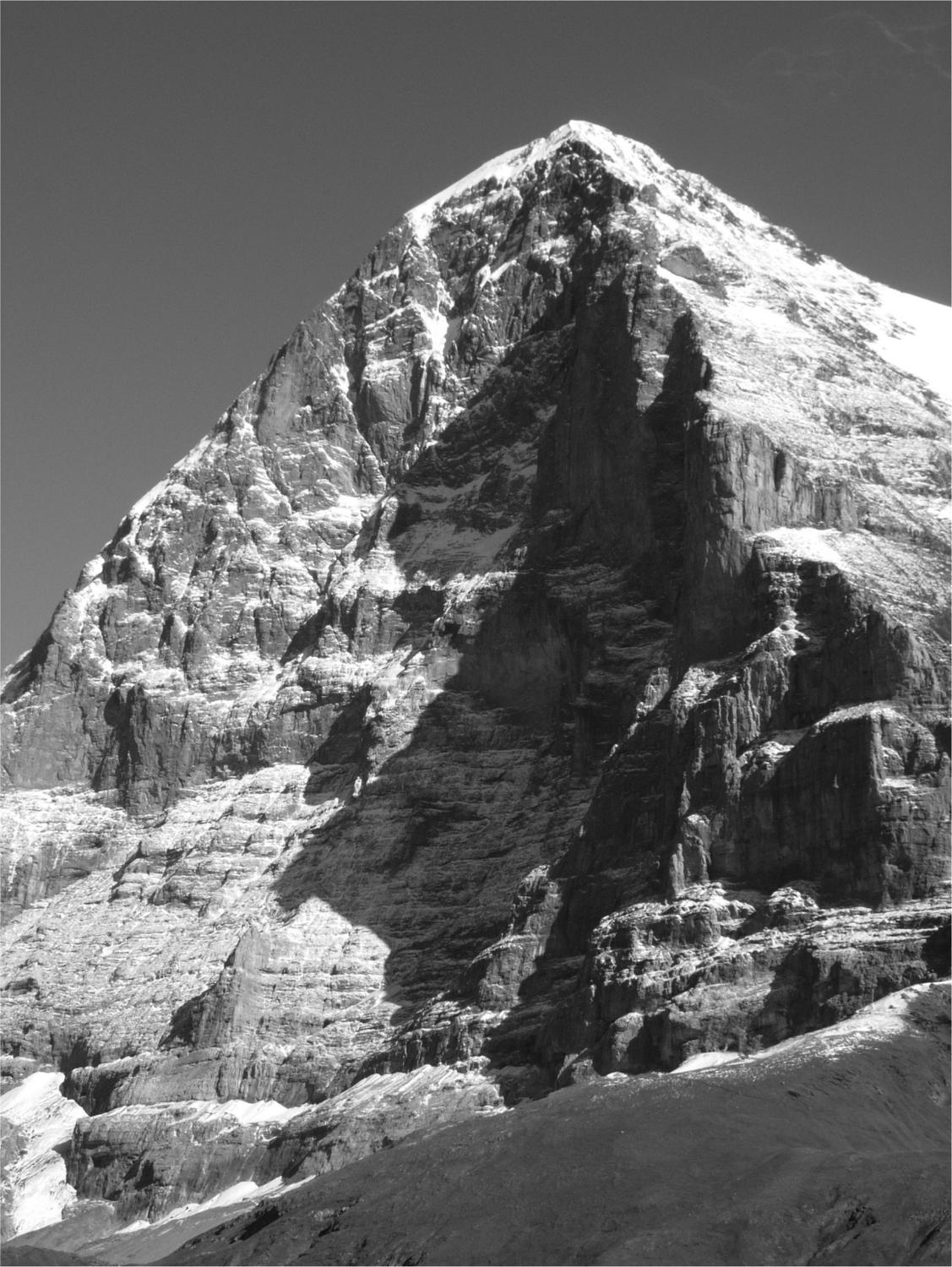
North Face of the Eiger.

1938 ROUTE, NORTH FACE OF THE EIGER (SWITZERLAND)
Climbing for me really began at university. After a faltering start, my academic performance had improved considerably a function of studiousness rather than any real talent and I found myself with a scholarship to Cambridge University. Cambridge is in the Fens, famous for being flat, wet and windy. There is nothing to climb. Well, not quite nothing.
These days, Im told, Cambridge is a demanding institution. But back in the late 1970s it was almost impossible to fail. There was only one thing you could do that meant automatic expulsion, and that was climbing on the college buildings. This of course made the idea irresistible. A lifetimes friendship was created as I teamed up with a fellow fresher, Bill Medlicott, who had not only undertaken an entire weeks introductory climbing course in North Wales but was also the proud owner of a rope. In our inaugural term, we put up a bold first ascent of the South-West Ridge of Sidney Sussex Chapel at least, it was bold if youd barely climbed before. I recall standing on the chapel roof, about to abseil down the rope now dangling into the courtyard below, when a college porter strode by. I thought, If he looks up, thats it. We wont have made even one term. Mercifully he didnt.
Font size:
Interval:
Bookmark:
Similar books «Seven Climbs: Finding the finest climb on each continent»
Look at similar books to Seven Climbs: Finding the finest climb on each continent. We have selected literature similar in name and meaning in the hope of providing readers with more options to find new, interesting, not yet read works.
Discussion, reviews of the book Seven Climbs: Finding the finest climb on each continent and just readers' own opinions. Leave your comments, write what you think about the work, its meaning or the main characters. Specify what exactly you liked and what you didn't like, and why you think so.

